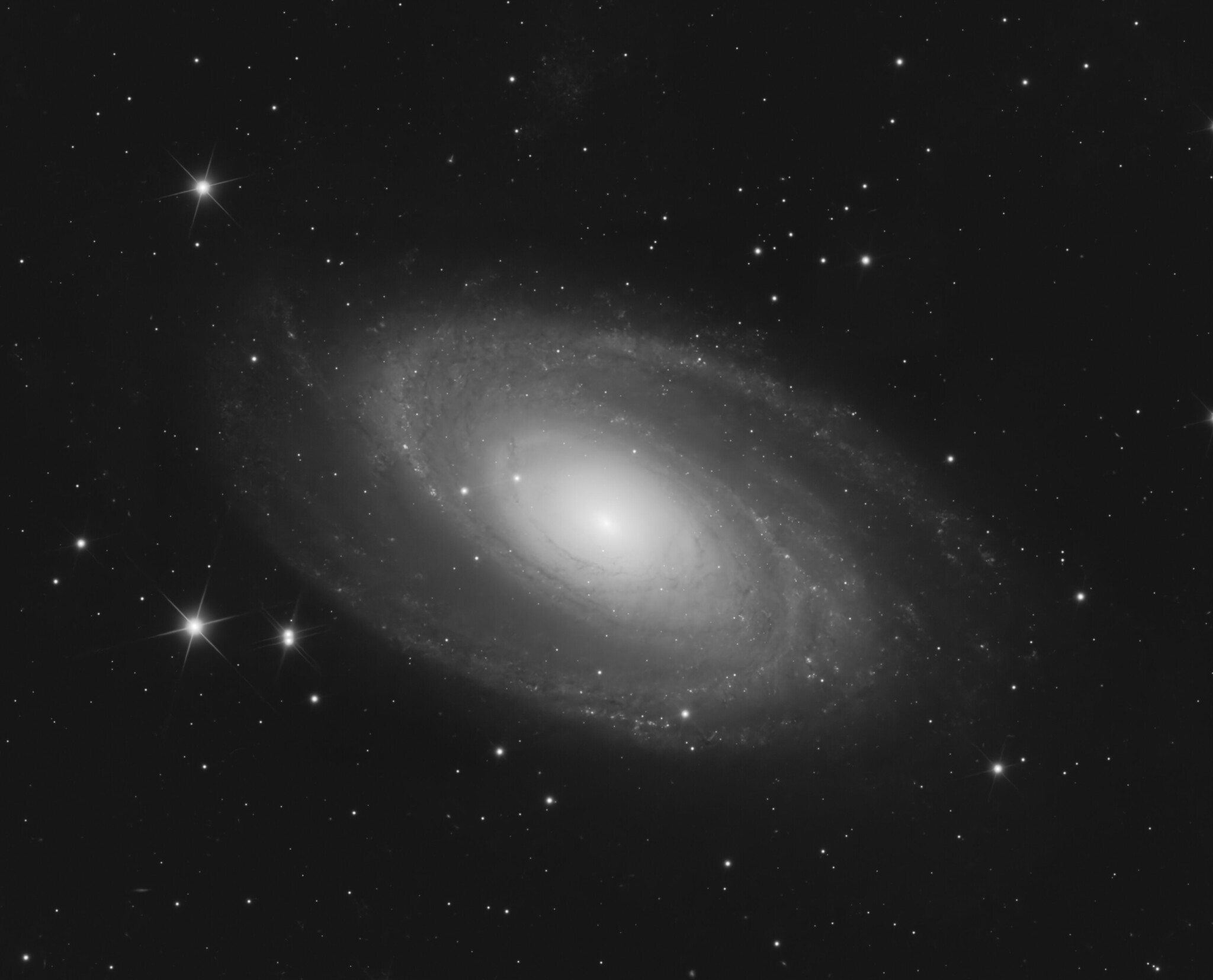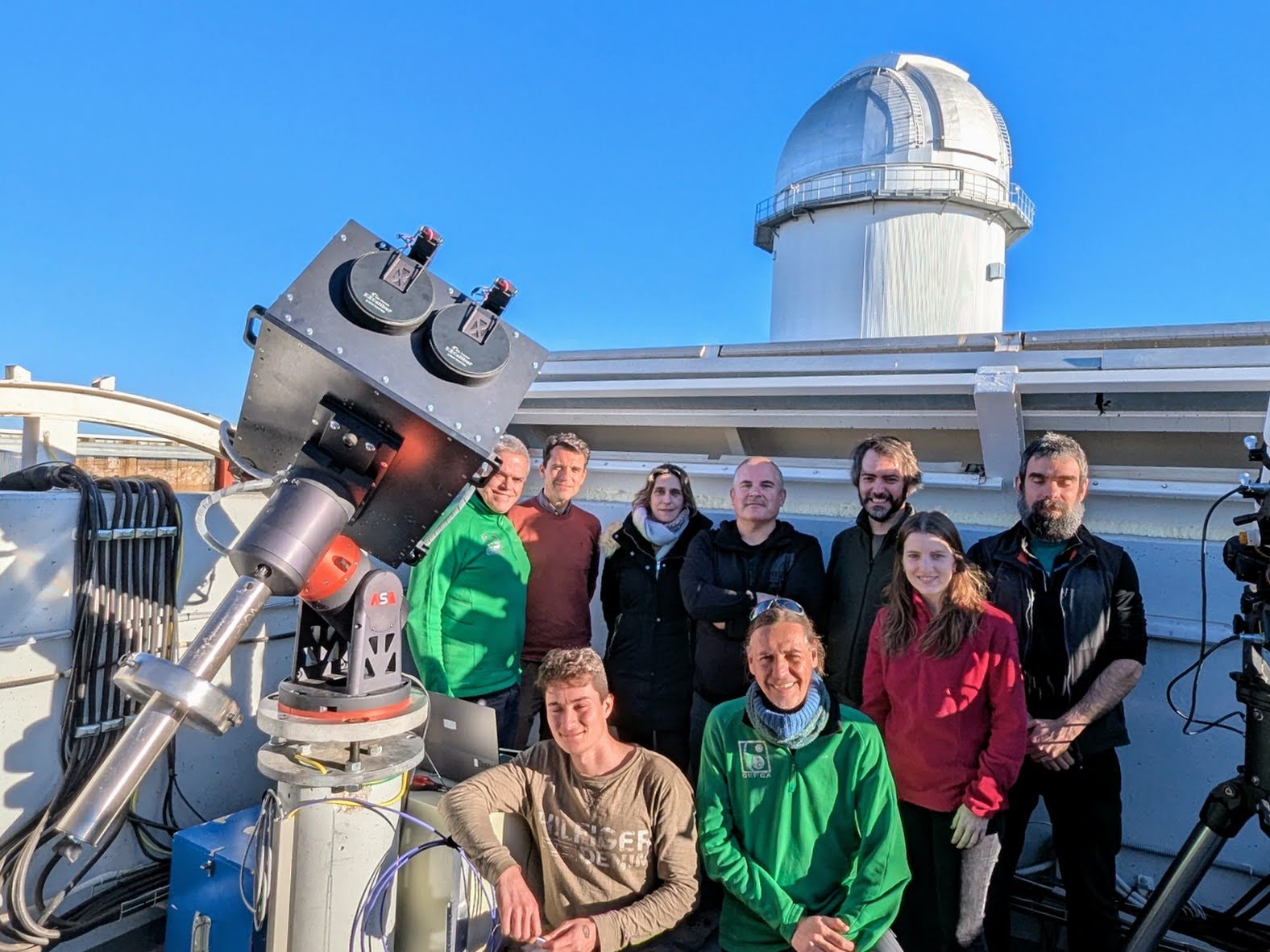ARRAKIHS starts its research at the Javalambre Astrophysical Observatory
- The European Space Agency (ESA) mission, led by Spain, will provide key information on the behaviour of dark matter
- The camera installed in Javalambre will devote more than a hundred hours of observation to each of the galaxies under study, similar to the Milky Way
- IEEC researchers at the Institute of Space Sciences (ICE-CSIC) participate in this mission, both in scientific and instrumentation activities

The ARRAKIHS space mission, selected by the European Space Agency (ESA) and led by Spain, starts its scientific preparation period at the Javalambre Astrophysical Observatory (OAJ), in the province of Teruel. This milestone is a fundamental step towards the launch of the mission (scheduled for 2030), which will study the formation process of galaxies such as the Milky Way, including the role of dark matter. The Institute of Space Studies of Catalonia (IEEC — Institut d’Estudis Espacials de Catalunya), with researchers at the Institute of Space Sciences (ICE-CSIC), participates in this mission in both scientific and instrumentation activities.
The ground-based demonstrator, very similar to the one that will be launched into space, is already operating at the OAJ. It is an iSIM-170 binocular camera built by the Spanish company Satlantis, and acquired by the Institute of Physics of Cantabria (IFCA, CSIC-UC). This camera consists of two telescopes, plus a multi-band imager, capable of observing in both the visible and near-infrared spectra. It is also fully adapted to operate on solid ground, thus achieving a high level of detail of the observed galaxies.
On the one hand, the performance of the demonstrator will be tested with real data, i.e. whether it achieves the required image depth and quality. In addition, the observing and data analysis strategies will be tested and validated to optimise these mission parameters prior to launch.
“The aim is to be as prepared as possible for the moment of launch and, at the same time, to reduce any uncertainty,” says Antonio Marín-Franch, researcher in charge of the OAJ and member of the ARRAKIHS Core Team. “It will allow us to perform a feasibility study of some critical aspects of the mission,” says Marín-Franch.
ARRAKIHS aims to deepen our knowledge of dark matter and galaxy formation, with a special interest in the Milky Way. For three years it will observe more than seventy galaxies in the near environment similar to our own, in visible and infrared light, on board a minisatellite in low-Earth orbit (650-800 kilometres). This will overcome the challenge of obtaining deep images at such low levels of surface brightness from Earth, due to atmospheric interference.
The Astrophysical Observatory of Javalambre
The Observatory, one of the seven astronomical Singular Scientific and Technical Infrastructures (ICTS) in Spain, provides the site and the mount where the ground-based demonstrator is already installed. The tests being carried out also involve the tuning of services, remote access and connectivity. This milestone in the critical review of the instrument is one of the main contributions to the mission of the Centro de Estudios de Física del Cosmos de Aragón (CEFCA), the centre that manages the observatory.
With the camera installed in Javalambre, a place with exceptional sky conditions, more than one hundred hours of observation will be devoted to each of the galaxies under study, similar to the Milky Way. This will facilitate the validation of the instrument, the scientific approach and the data analysis tools. After its launch in 2030, the ground-based demonstrator will continue to support the space-launched instrument, allowing a valuable comparison between ground-based data and data from the orbiting satellite.

“A ground-based demonstrator is very unconventional for a space mission. Having ground-based observations with the same space camera at this early stage of the mission gives us a great advantage to optimise the science instrument,” shares Santiago Serrano, ARRAKIHS Instrument Manager, Science Director at Satlantis and IEEC researcher at the ICE-CSIC. “It was spectacular to see these impressive images of deep space for the first time with an iSIM170 camera—it exceeded our expectations.”
Participation of IFCA, Satlantis and the IEEC
IFCA (CSIC-UC) is the Spanish institution leading the mission and has made the purchase of the camera, funded by the State Research Agency (Agencia Estatal de Investigación, AEI) and co-funded by the European Union, within the State Programme to Address the Priorities of Our Environment, of the State Plan for Scientific and Technical Research and Innovation 2021-2023 (PCI2023-143421).
On the other hand, Satlantis leads the business part of the ARRAKIHS Mission Consortium (AMC), which includes technology companies from all over Europe. The consortium also includes universities and research centres with scientists and engineers from different European countries (Spain, Austria, Belgium, Portugal, Norway, United Kingdom, Sweden and Switzerland).
The IEEC is responsible for the characterisation of the instrument’s detectors in the visible range, a new image sensor technology (CMOS sensors) designed for space applications. In addition, the team will operate the instruments and support mission scheduling. The science activity will include cosmological simulations of modified gravity and the analysis of galactic cirrus clouds.
Contacts
IEEC Communication Office
Castelldefels, Barcelona
E-mail: comunicacio@ieec.cat
Lead Researcher at the IEEC
Santiago Serrano
Institute of Space Studies of Catalonia (IEEC)
Institute of Space Sciences (ICE-CSIC)
E-mail: serrano@ieec.cat, serrano@ice.csic.es
About the IEEC
The Institute of Space Studies of Catalonia (IEEC — Institut d’Estudis Espacials de Catalunya) promotes and coordinates space research and technology development in Catalonia for the benefit of society. IEEC fosters collaborations both locally and worldwide and is an efficient agent of knowledge, innovation and technology transfer. As a result of more than 25 years of high-quality research, done in collaboration with major international organisations, IEEC ranks among the best international research centres, focusing on areas such as: astrophysics, cosmology, planetary science, and Earth Observation. IEEC’s engineering division develops instrumentation for ground- and space-based projects, and has extensive experience in working with private or public organisations from the aerospace and other innovation sectors.
The IEEC is a non-profit public sector foundation that was established in February 1996. It has a Board of Trustees composed of the Generalitat de Catalunya, Universitat de Barcelona (UB), Universitat Autònoma de Barcelona (UAB), Universitat Politècnica de Catalunya · BarcelonaTech (UPC), and the Spanish Research Council (CSIC). The IEEC is also a CERCA centre.
